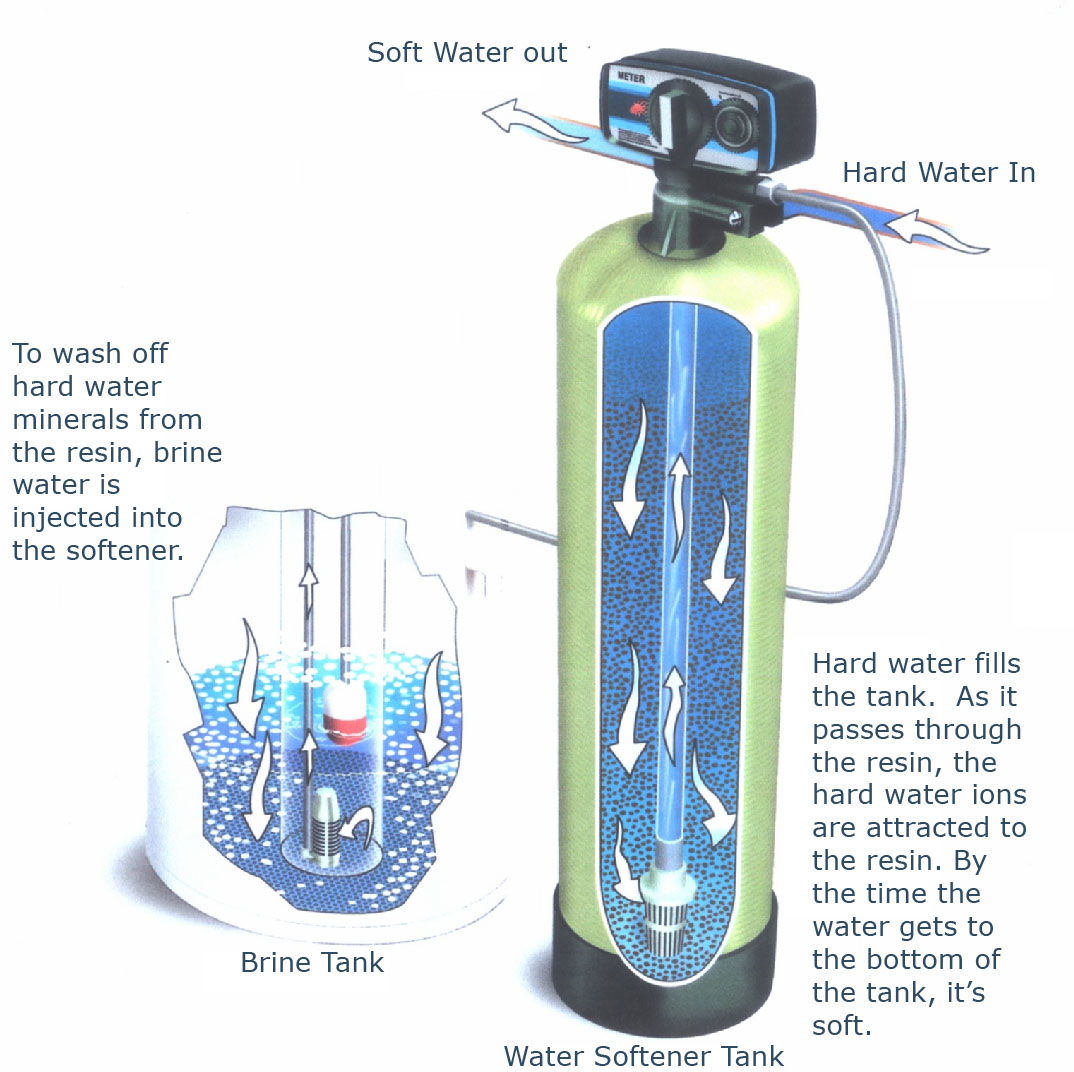1) The body of a water softener is a tank filled with resin beads. These beads are covered with sodium ions. As hard water passes through, the resin beads act like a magnet,
attracting the calcium and magnesium ions (hardness) in exchange for the sodium ions.
2) Eventually the resin beads become saturated with mineral ions and have to be "re-charged." This process is called regeneration, and is conducted by the control valve on the top of the tank. The control valve is the brain of the system.
3) During regeneration, a strong brine solution is flushed through the
resin tank, bathing the resin beads in a stream of sodium ions which replace
the accumulated calcium and magnesium ions (hardness).
4) The brine solution, carrying the displaced calcium and magnesium ions,
is then flushed down the drain by fresh water. The regenerated resin beads
can be used again and again.
FYI: Hard water measures from 1 gpg to well in excess
of 100 gpg. The Environmental Protection Agency recommends using water
not exceeding 7 gpg.
